Rice paper vegetarian spring rolls filled with baked tofu, vegetables, and rice noodles. These are best served with hoisin peanut sauce.
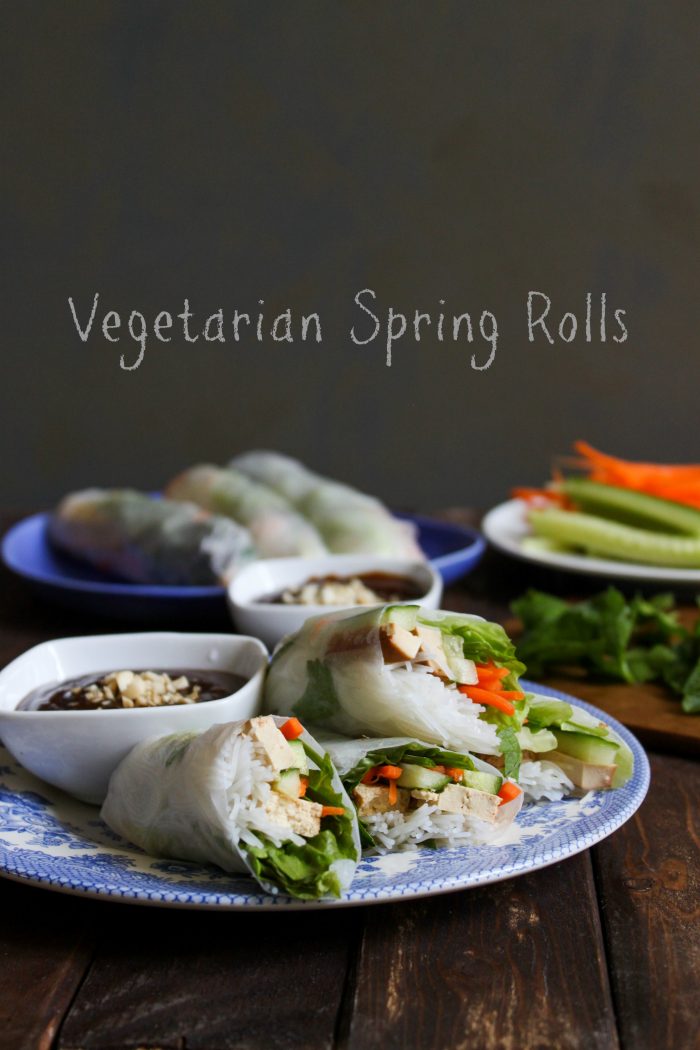
This is one of my favorite “food from home” meals for all sorts of adventures. It’s great for packed lunches, picnics, beach trips, long car rides, or airports.
These spring rolls are super convenient and easy to transport. They stay fresh for several hours at room temperature. Meaning they’re perfect on the go!
The exact recipe here is vegetarian, however, I suggest you use this more as a guideline. Forage through your fridge and take advantage of the ingredients you already have. These spring rolls work well with a variety of vegetables and proteins!
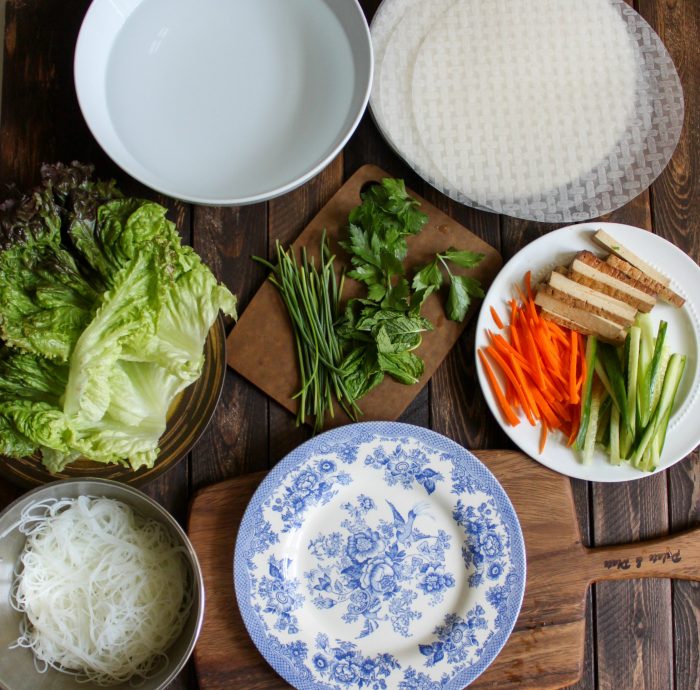
Ingredients
These vegetarian spring rolls are delicious, clean, and so refreshing. The pop of fresh mint and cilantro really livens the flavors.
Don’t feel limited by the ingredients in the image above. You can really fill these rolls with whatever you want! I’ve made a Korean inspired spring roll filled with bulgogi, kimchi, and lots of greens. And, even a California roll spring roll with imitation crab, cucumber, and avocado.
The key ingredients for this version include:
- Rice Paper Wrappers
- Pressed Tofu (or baked tofu)
- Rice Noodles (aka rice vermicelli)
- Vegetables (carrots, cucumbers, lettuce)
- Herbs (mint, cilantro, chives)
Rice paper wrappers are sold in dried round sheets. They come in a variety of sizes. Rice paper must be rehydrated in water before use. Soak paper in warm water for a few seconds, just until pliable. Don’t worry if the wrapper feels firm, it will continue to soften as you fill it with ingredients.
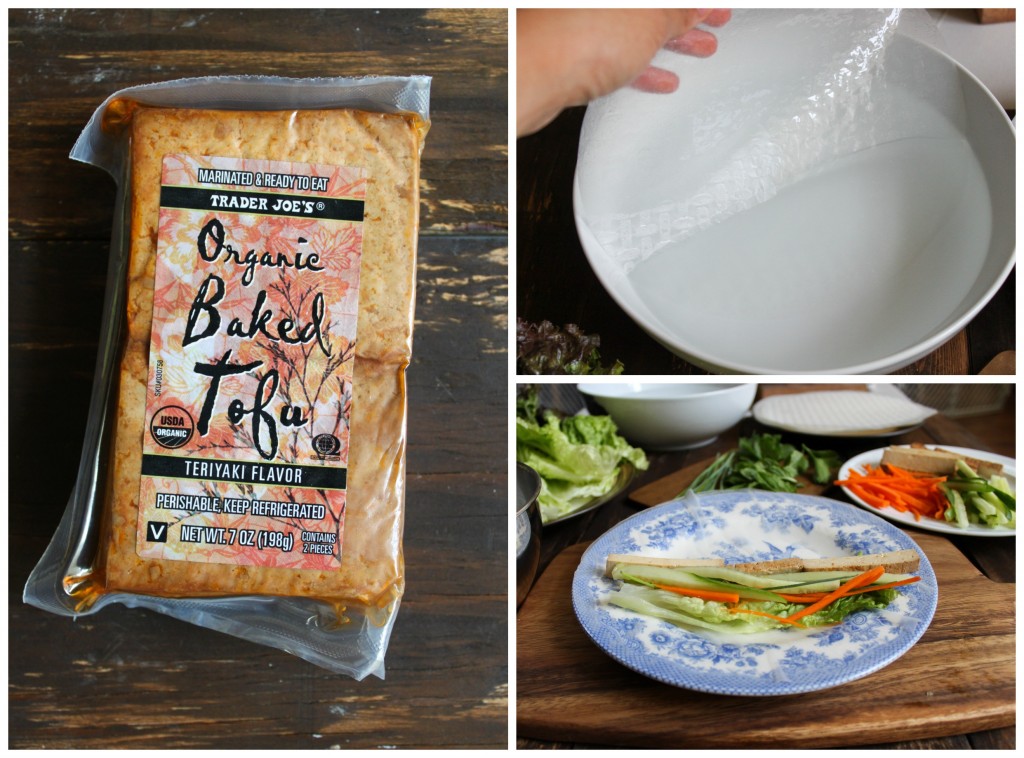
For the sake of ease, I made these rolls with the teriyaki flavor baked tofu photographed above. It’s a refrigerated, ready to eat tofu available at Trader Joe’s. You can find similar ones at any national supermarket chain.
When tofu is baked, it becomes firmer and absorbs flavor. All you have to do is slice this baked tofu into small strips. It’s a great meat alternative!
Rice noodles are made from rice flour and water. They are sold dry and come in a range of shapes and sizes- from thin vermicelli to wide flat noodles. Rice noodles don’t have much flavor on their own. Instead, they easily soak up sauces. Just like rice paper wrappers, rice noodles need to cooked or rehydrated before use.
It’s good to choose crunchy vegetables to contrast with the soft noodles. Carrots, cucumbers, and bell peppers are great options.
Assembly
It is important to have all your components ready before you begin rolling. Fill a large bowl with warm water. Working with one wrapper at a time, dip the wrapper into the warm water for 2 seconds to soften. Be careful not to soak the wrapper for too long because it will be very difficult to work with.
Don’t worry if the wrapper feels too firm after 2 seconds. It will continue to soften and absorb water as you fill the wrapper with ingredients.
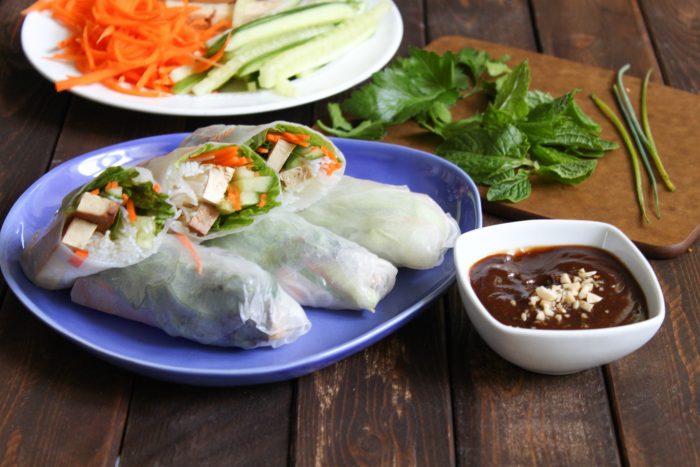
Serving Suggestions
These spring rolls are so easy to make that you’ll wonder why you ever paid for them. Its a great way to up your herbs and vegetable intake. Not only are these spring rolls perfect for picnics at the Bowl, they’re a great way to impress your friends at your next potluck.
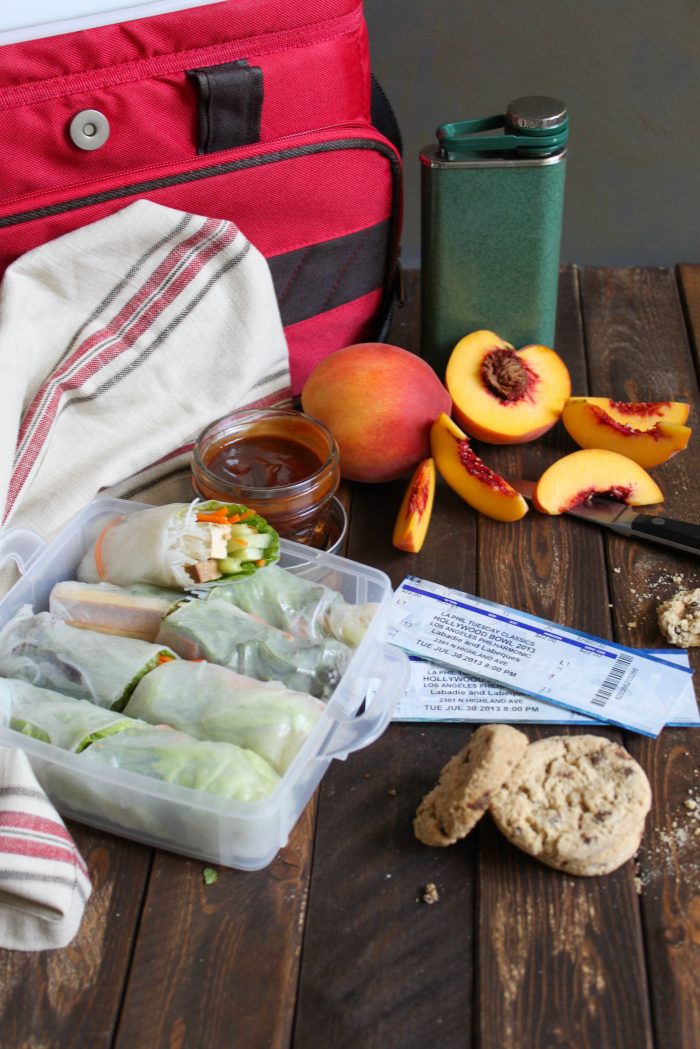
More Vegetarian Recipes
- Homemade Ricotta with Slow Roasted Tomatoes
- Garlic Chive Cream Cheese Spread
- Mushroom Spinach Garlic Noodle
- Baked Crunchy Chickpeas
Vegetarian Spring Rolls
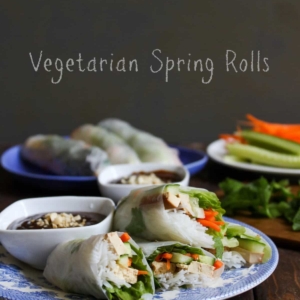
Ingredients
Spring Rolls:
- 3 oz rice stick noodles , also known as rice vermicelli
- 8 pieces rice wrappers , (8 ½-inch diameter)
- 7 oz pressed baked tofu, sliced into ¼-inch strips
- 2 medium carrots, julienne, small strips
- 2 small seedless cucumbers, julienne, small strips
- 8 pieces red leaf lettuce leaves
- fresh mint leaves, as needed
- fresh cilantro, as needed
Peanut Hoisin Sauce:
- ⅔ cup hoisin sauce
- 2 Tbsp smooth peanut butter
- 2 Tbsp water, or more to thin out sauce
- ½ Tbsp Sriracha sauce, or more if desired
- 1 teaspoon finely chopped peanuts
Instructions
Spring Rolls:
- Cook noodles according to package instructions. Generally, place rice noodle in a large bowl. Boil enough water to submerge noodles. Pour boiling water over noodles and let sit until noodles are tender. Drain noodles well, run under cold water to stop cooking, and drain again. Let noodles sit while you prepare remaining ingredients.
- Fill a large bowl with warm water. Working with one wrapper at a time, dip wrapper into the warm water for 2 seconds to soften. Do not soak the wrapper for too long because it will be very difficult to work with. Don't worry if the wrapper feels too firm. The wrapper will continue to soften as you fill it with ingredients.
- Place wrapper on a flat working surface, a plate or cutting board. Fill the wrapper. Begin by placing the lettuce at the bottom of the wrapper, closest to you. Over the lettuce, place the carrots and cucumber slices. Follow with the tofu and herbs. Take a small handful of the cooked noodles and place it over the rest of the ingredients.
- To roll, take the end closest to you. Gently pull the wrapper away from the plate/cutting board and fold it over the filling, similar to how you would roll a tortilla burrito. Fold the sides inward, and tightly roll the wrapper.
- Repeat with remaining wrappers.
Peanut Hoisin Sauce:
- In a small bowl, mix together hoisin sauce, peanut butter, and Sriracha sauce. Distribute among small serving sauce bowl and garnish with chopped peanuts.
Notes
- For best results, enjoy the same day rolls are assembled.
- Assembled rolls may be kept in a covered container at room temperature for several hours before serving. Ideally, enjoy within 3 hours of assembly.
- Store leftovers in a covered container in the fridge for up to two days. Allow rolls to warm to room temperature before eating. Rice paper needs time to soften.
- Kept leftover peanut hoisin sauce in a covered container in the fridge for up to four days.
- Korean bulgogi, Filipino barbecue, or many marinated grilled meats
- Imitation crab, cucumber and avocado to make a California Roll spring roll
- Grilled vegetables (bell peppers, onions, eggplant)
Nutrition
Nutrition information is automatically calculated, so should only be used as an approximation.
 Like this recipe? Rate & comment below!
Like this recipe? Rate & comment below!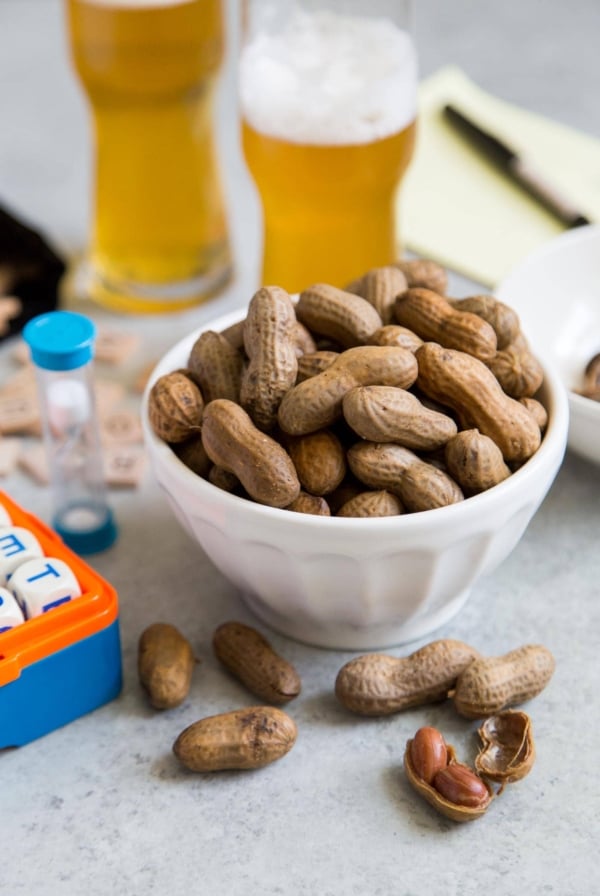
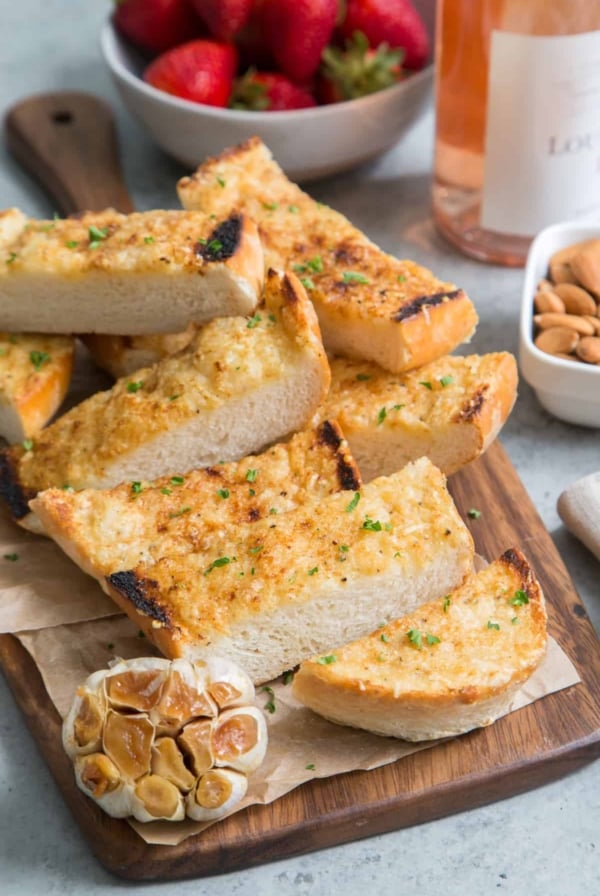
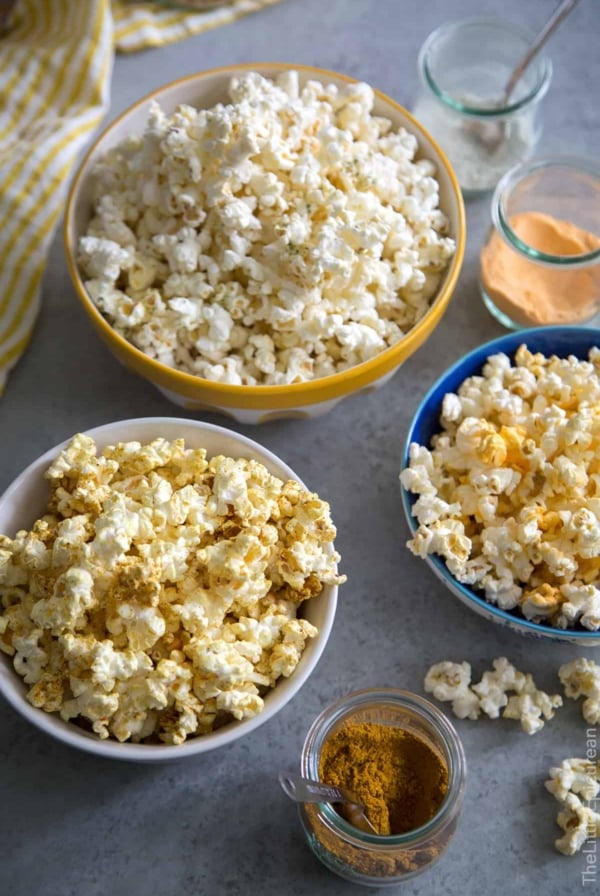
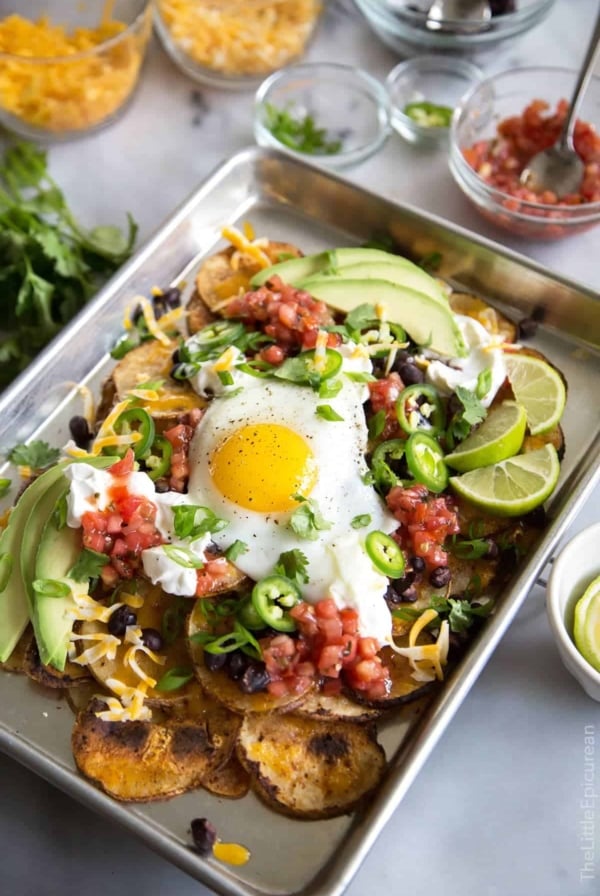





Just found your blog and absolutely love it! The recipes look amazing (can’t stop pinning them haha) and the photography is gorgeous! :)
Thanks Millie! I really appreciate it :)